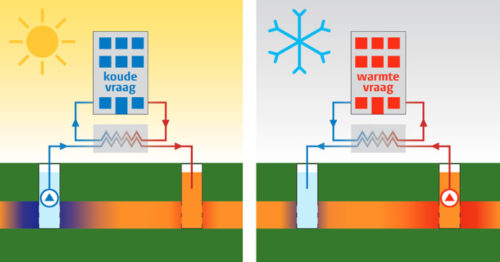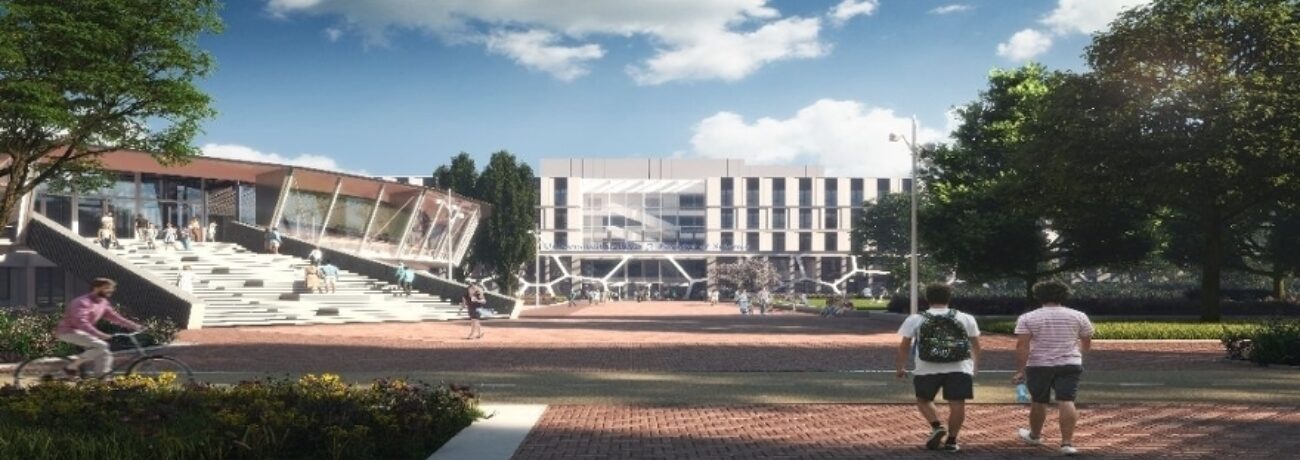Heating and cooling with a clear conscience on the Science Campus
Leiden University is taking a major step forward in the energy transition with the expansion of the thermal energy storage (TES) in the Gorlaeus Building. This expansion is needed to be able to heat and cool all the new and renovated buildings on the Campus Square of the Faculty of Science sustainably. The University will be using sustainable TES increasingly in the coming years as an alternative for energy from fossil fuels.
Thermal energy storage allows residual heat from the summer and cold from the winter to be stored in the ground. The stored winter cold cools the buildings in the summer and the stored summer heat warms the buildings in the winter months. Leiden University is already using this method on the Leiden Bio Science Park Campus and at Campus The Hague, and will also be applying it next year on the Humanities Campus.
Third pump
The two heat pumps that have been located since 2016 in the power plant of the Gorlaeus Building to heat and cool the first part of this major new building project will soon be supplemented by a third pump. This will provide enough energy to supply all the heating and cooling needed for the expansion of the Gorlaeus Building and its connection to the adjacent Lecture Halls building currently being renovated and the new Sports and Examination Centre that will be constructed opposite it.
Ground energy plan
The newest pump will take its heat and cold from its own underground TES doublet. This system has two sources: one for warm air and one for cold, and this doublet will be the fifth in the area. To protect the soil, Leiden University had a soil energy plan drawn up showing exactly where the subsoil in the surrounding area is suitable for further development. This will allow external new-build developers to make appropriate choices. The aim is to prevent an uncontrolled proliferation of UTES systems and to use the soil as efficiently as possible.
The new TES at Gorlaeus will be ready for use in June this year.


